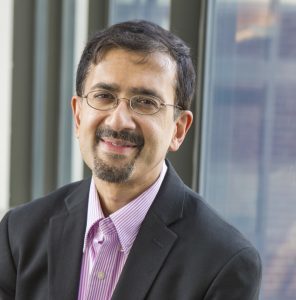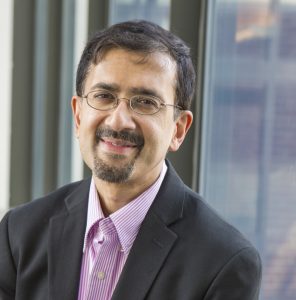 In this video from SC16, Sadasivan Shankar presents: Co-Design 3.0 – Configurable Extreme Computing, Leveraging Moore’s Law for Real Applications.
In this video from SC16, Sadasivan Shankar presents: Co-Design 3.0 – Configurable Extreme Computing, Leveraging Moore’s Law for Real Applications.
“Think back to your childhood when you used Lego blocks to build structures. The Lego blocks were re-assembled to different structures for purely learning purposes. Let us take this a couple of steps further. Now imagine that the assembled structures themselves can be used for real functional applications. In addition, what if each of the blocks could be designed and optimized at the application time? Now you have more degrees of freedom in building different functional systems, as you need it. Co-design 3.0 makes a case for such a paradigm in which users working with both hardware and software vendors co-design a flexible computing platform for each of the applications. Think of a computing platform for personalized medicine, a new material, or a new chemical molecule, which is different from the high performance computing used for weather prediction or social networking or search engines. In turn, a computing platform for each of these is different from that needed to design a microprocessor or an aircraft. This talk will explore six different trends all of which are associated with some form of scaling and how they could enable an exciting world in which we co-design a platform dependent on the applications. I will make the case that this form of “personalization of computation” is achievable and is necessary for applications of today and tomorrow.”
Dr. Sadasivan (Sadas) Shankar earned his Ph.D. in Chemical Engineering and Materials Science from University of Minnesota, Minneapolis. He has initiated and led multiple efforts at Intel, most recently the Materials Design Program. Over his tenure in research and development in the semiconductor industry, he and his team have worked on several new initiatives; using modeling to optimize semiconductor processing and equipment for several technology generations, advanced process control using physics-based models, thermo-mechanical reliability of microprocessors, thermal modeling of 3D die stacking, and using thermodynamic principles to estimate energy efficiency of ideal computing architectures. Dr. Shankar is the first Margaret and Will Hearst Visiting Lecturer in Computational Science and Engineering at the Harvard John A. Paulson School of Engineering and Applied Sciences, where he is involved in teaching and research in the areas of large-scale computational methods, chemistry, and materials. In 2013, as the first Distinguished Scientist in Residence at the Institute of Applied Computational Sciences in Harvard, he co-instructed a graduate-level class on Computational Materials Design, which covered fundamental atomic and quantum techniques and practical applications for new materials by design.
He is a co-inventor in several patent filings covering areas in new chemical reactor designs, semiconductor processes, bulk and nano materials, device structures, and algorithms. He is also a co-author in publications and presentations in the areas of chemical synthesis, plasma chemistry and processing, Monte Carlo and molecular dynamics methods, non-equilibrium electronic transport, electromigration, rarefied and continuum reacting flows, and atomic methods enabling accelerated calculations for material properties and interfaces.
He has been involved in several collaborative national and international efforts with Semiconductor Research Corporation, SEMATECH, National Institute of Standards and Technology, National Academies, Department of Energy, and President’s Materials Genome Initiative. Dr. Shankar has also worked with several universities and research labs across the world for development of new methods in material science, chemistry, and engineering and in highlighting research needs for material characterization and modeling for industrial applications.




